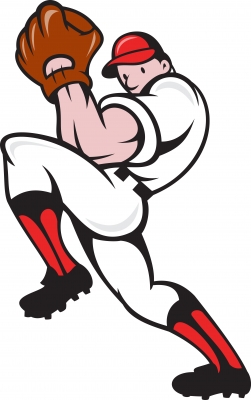RFP Mounds
Real Strides in Safety Give Baseball Pitchers Better Prospects of Injury-Free Careers
Hurling a heavy, dense ball at up to one hundred miles per hour, baseball pitchers put incredible stresses on their muscles and joints. A proper baseball pitching motion marshals a large majority of the body's overall force-generating potential, channeling all of that energy through one arm and the shoulder that joins it to the body.
It is probably not surprising, then, that so many talented pitchers succumb to injuries even relatively early on in their careers. Practically every fastball pitcher who makes it to the major leagues and remains there for a decade or more, for example, will have to face down a shoulder injury or two. Even more younger pitchers are stopped short along the way, sustaining damage to their bodies that keeps them from realizing their potential.
This sad state of affairs has been recognized for decades, but relatively little has been done about it. In general, a fairly fatalistic attitude about baseball pitching injuries has been the norm, with even the most ambitious of coaches and trainers sometimes seeing those problems as basically unavoidable.
That is starting to change, however. In recent years, a more pragmatic approach to the problem has yielded up a number of fruitful insights, some of which are now benefiting pitchers of all ages and skill levels immensely. For example, the role played by low-quality practice mounds in contributing to injuries is now widely recognized, and real steps are being taken to overcome this problem.

RFP Mounds, for example, now produces a pitching mound that is designed to be much safer for pitchers than the traditional options. Considered by many to be the most advanced practice mound on the market, it is topped with soft, yielding clay, just like permanent pitchers' mounds traditionally are.
In practicing with this most advanced practice mound, then, pitchers experience a more forgiving setup, one that allows them to pitch their hardest while worrying less about the possibility of injury. Instead of the grabby, stiff artificial turf that is the standard on most practice mounds of conventional design, this one offers up a much more forgiving surface to pitch from.
Although it is still too early to tell how much of a difference the new mounds will ultimately make, few doubt that they are contributing positively to the health and prospects of the pitchers who use them. With definite, productive strides of this sort being made all throughout the sport, there may even come a time when pitchers no longer have to fear injury to such a great extent.